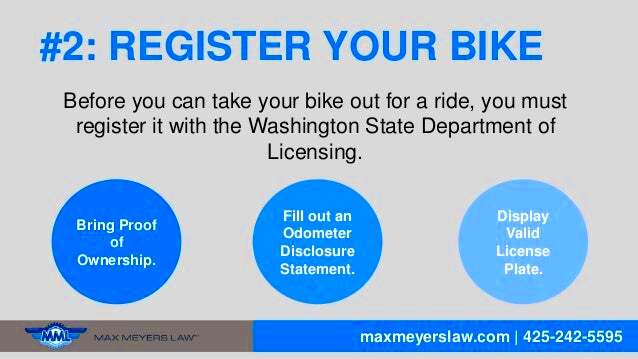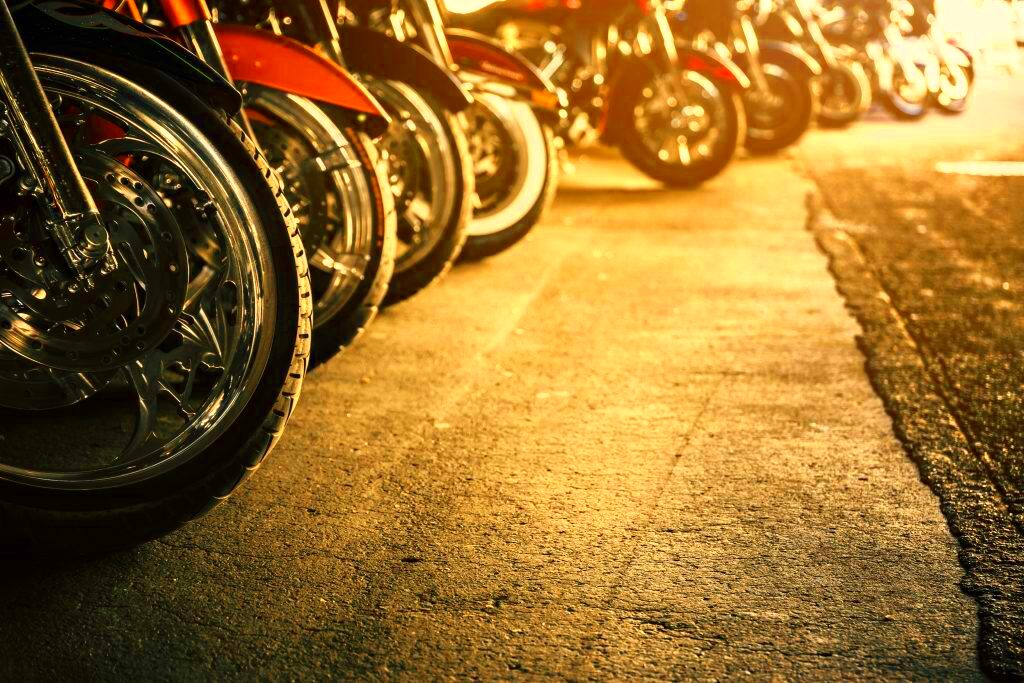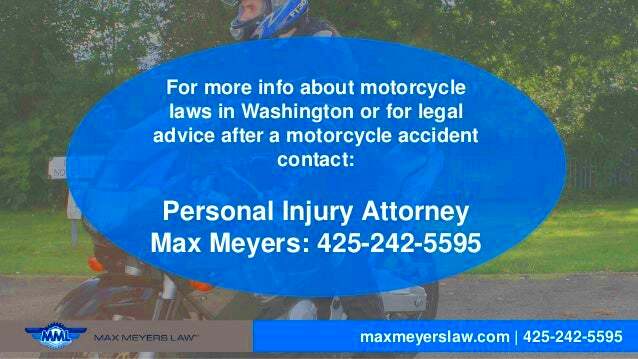Key Points of Washington’s Motorcycle Laws
Experiencing the thrill of riding a motorcycle is truly unmatched. The sense of liberation as you cruise along the highway is something that resonates with many of us. However along with that freedom comes a responsibility, particularly in Washington where there are laws designed to protect both motorcyclists and others on the road. Washingtons motorcycle regulations encompass aspects such as helmet mandates and insurance requirements to ensure that all riders act responsibly. During my rides I’ve come to understand that knowing these rules goes beyond evading penalties—it’s crucial for ensuring safety. So let’s explore some of these key points together.
Helmet Requirements and Safety Gear

For motorcyclists in Washington one of the key things to be aware of is the significance of wearing helmets. The state mandates that all riders don helmets that comply with Department of Transportation (DOT) standards. When I started biking I used to view a helmet as an addition. However after hearing stories about accidents and near misses I came to understand that it could potentially save my life. But it’s not limited to just the helmet. Having eye protection such as a visor or goggles is also essential especially considering Washington’s weather conditions.
Here are some key things to keep in mind regarding safety equipment
- Helmet: Must meet DOT standards, ensuring the helmet has the right impact protection.
- Eye Protection: Either through a visor attached to the helmet or separate goggles, you need something to protect your eyes from debris and wind.
- Other Protective Gear: While not legally required, wearing jackets with padding, gloves, and strong boots can go a long way in ensuring your safety on the road.
Believe me when I say that when you prioritize safety, the experience of riding becomes way more fun, as you can ride with peace of mind knowing that you’ve taken all the necessary precautions to keep yourself safe.
Licensing and Endorsement Rules for Motorcyclists

Getting a motorcycle license in Washington is not as easy as jumping on a bike and taking off. I found this out the hard way when I attempted to get mine for the time. I assumed that my driving abilities would seamlessly translate to riding a motorcycle but it turns out that riding a bike is an entirely different experience. In Washington motorcyclists are required to have a motorcycle endorsement added to their drivers license. This involves following a process that includes both written and practical tests.
Here’s a quick breakdown of the process:
- Knowledge Test: This written exam tests your understanding of motorcycle laws, road safety, and handling. When I took mine, I was surprised by how much I didn’t know about motorcycle-specific rules.
- Skills Test: This on-road test evaluates your ability to control the bike, navigate traffic, and handle tricky situations. I remember practicing for days in a parking lot before I felt ready to take it.
- Endorsement: Once you pass both tests, you’ll get a motorcycle endorsement, allowing you to legally ride on Washington roads.
Although the journey may seem challenging, the benefits are undeniable. The self assurance you receive from receiving training enhances both the quality and safety of your rides. Ultimately, isn’t that the goal we all strive for while driving?
Lane Splitting and Lane Sharing Regulations

When I initially came across the idea of lane splitting, it struck me as an unusual notion. After all, we’re all conditioned to stick to our designated lanes, aren’t we? However in Washington the law is quite explicit regarding this matter—lane splitting is prohibited. This implies that maneuvering your motorcycle between two lanes of traffic, particularly when vehicles are moving slowly or at a standstill, is against the law. I’ve witnessed some riders take that chance but believe me it’s not worth it. Not only could you face a fine but it also puts you in perilous situations where other drivers may not be able to spot you.
Sharing a lane with another motorcycle in Washington is allowed. I usually ride alongside a close friend and it gives me peace of mind to know that we can do so safely. However we still maintain some distance to prevent any accidents. The law also permits motorcycles to use the High Occupancy Vehicle (HOV) lanes which comes in handy during busy traffic. It’s one of those little benefits that enhances the experience of riding a motorcycle.
In summary, here’s what to keep in mind:
- Lane Splitting: Not allowed in Washington, and it’s best not to try it.
- Lane Sharing: Permitted for two motorcycles, but keep a safe distance.
- HOV Lanes: Motorcyclists can use these, making city commuting a bit easier.
By grasping these regulations you not only stay within the boundaries of the law but also enjoy a sense of reassurance while riding.
Insurance Requirements for Riders
To be frank when I purchased my motorcycle I didn’t give much thought to insurance. I was caught up in the thrill of the journey and the feeling of the wind on my face. However reality set in swiftly when I discovered that Washington has stringent insurance regulations for motorcycle riders similar to those for vehicles. In Washington every motorcyclist is required to have liability insurance to cover any damages or injuries caused in an accident.
Let’s break down the minimum insurance requirements in a straightforward way.
- $25,000 for bodily injury or death per person.
- $50,000 for bodily injury or death per accident.
- $10,000 for property damage.
Once I secured my insurance I truly understood its significance, particularly after witnessing a small mishap between a motorcyclist and a vehicle. The expenses for repairs and medical costs can be quite burdensome without adequate protection. Apart from liability insurance I chose to get comprehensive coverage to safeguard my motorcycle against theft or damage even when I’m not riding it. While it was a financial commitment it has brought me a sense of reassurance whenever I hit the road on my bike.
Keep in mind that although Washington law doesn’t mandate coverage for your injuries it’s a good idea to think about personal injury protection too. Believe me being too prepared is always a safer bet when you’re driving.
Speed Limits and Road Usage for Motorcycles
One thing you learn as a rider is that speed limits are not merely recommendations. In Washington speed limits are enforced for motorcycles just like they are for cars. I know friends who believed that riding a bike would give them an edge when it came to speeding but the truth is that riding a motorcycle carries greater risks. Speed limits in Washington typically range from 60 to 70 mph on highways and are lower in residential areas averaging around 25 to 35 mph.
Riding a motorcycle is all about staying alert to the state of the road. While the streets might look familiar, the sensation of riding on two wheels is a whole different ball game compared to four. I’ve come across my share of bumps in the road, scattered gravel and slippery surfaces – each encounter serving as a reminder that prioritizing caution is way more crucial than just hitting the speed limit.
Here are a few key points to keep in mind:
- Highway Speeds: Generally 60-70 mph depending on the area, and it’s important to stick to these limits, even if it feels tempting to push a bit faster.
- Residential and Urban Areas: Speed limits drop significantly, typically around 25-35 mph. Slowing down in these areas is crucial to avoid accidents, especially with pedestrians and cyclists nearby.
- Road Hazards: Watch out for potholes, gravel, and slick surfaces. A small obstacle that might seem minor in a car can be a big deal on a bike.
After many years of biking I’ve realized that speed limits serve a purpose and adhering to them enhances the safety of the trip for all.
Penalties for Violating Motorcycle Laws
Riding a motorcycle in Washington comes with more than just the risk of getting a ticket for breaking the rules. It can have dire consequences. I recall a buddy of mine who figured it would be okay to skip wearing a helmet for a short ride around the neighborhood. Well, that turned out to be a mistake. He ended up getting pulled over and the fine was quite hefty. In Washington the penalties for violating motorcycle laws can vary from fines to having your license suspended depending on the offense.
Heres a brief overview of penalties.
- Helmet Violation: Fines for not wearing a DOT-approved helmet can range between $136 to $450. That’s quite a hefty price for skipping a basic safety measure.
- Unlicensed Riding: Riding without a proper motorcycle endorsement can result in a fine of up to $500. Worse, you could face license suspension.
- Speeding: Speeding on a motorcycle carries the same penalties as in a car. Depending on how much over the limit you are, fines can go up to $500, and repeated offenses could lead to suspension or higher insurance premiums.
- Lane Splitting: While lane splitting might seem tempting in traffic, getting caught can result in fines ranging from $136 to $200. It’s not just illegal, but it puts you in serious danger.
While the excitement of riding can be captivating it’s important to remember that Washington’s laws are in place for a purpose. My years of riding experience have taught me that adhering to the rules and prioritizing safety is far more beneficial than dealing with hefty penalties and even more importantly risking harm.
Frequently Asked Questions About Washington’s Motorcycle Laws
Throughout the years, numerous individuals have inquired about the motorcycle regulations in Washington. Here are a few frequently asked questions that I have encountered.
- Do I need to wear a helmet even if I’m just riding in my neighborhood? Yes, Washington law requires all motorcyclists, regardless of distance or speed, to wear a DOT-approved helmet at all times.
- Can I ride my motorcycle without an endorsement? No, you must have a motorcycle endorsement on your driver’s license to legally ride a motorcycle in Washington. Riding without one can result in fines or license suspension.
- Is lane splitting allowed in Washington? No, lane splitting is illegal in Washington, and violators can be fined if caught. It’s best to stick to your lane, even if traffic is slow.
- Are motorcycles allowed in HOV lanes? Yes, motorcycles are permitted to use HOV lanes even if you’re riding solo, which is a great way to avoid traffic congestion.
- What are the consequences of not having insurance? If you’re caught riding without insurance, you could face fines and legal consequences. Washington requires motorcyclists to carry liability insurance just like car drivers.
I’ve received inquiries about various topics. If you have doubts regarding any rule, it’s wise to refer to regulations or seek guidance from seasoned riders.
Conclusion on Washington’s Motorcycle Laws
Cruising on a bike in Washington is an adventure but it also comes with its share of responsibilities. Wearing a helmet knowing how to use lanes and having the right insurance are all important for keeping riders and everyone else on the road safe. After years of hitting the road I’ve learned to value these rules instead of pushing back against them. Sticking to them makes my rides smoother safer and way more fun. Keep in mind it’s not just about dodging fines – it’s about making sure every journey ends with you getting back home, in one piece.


